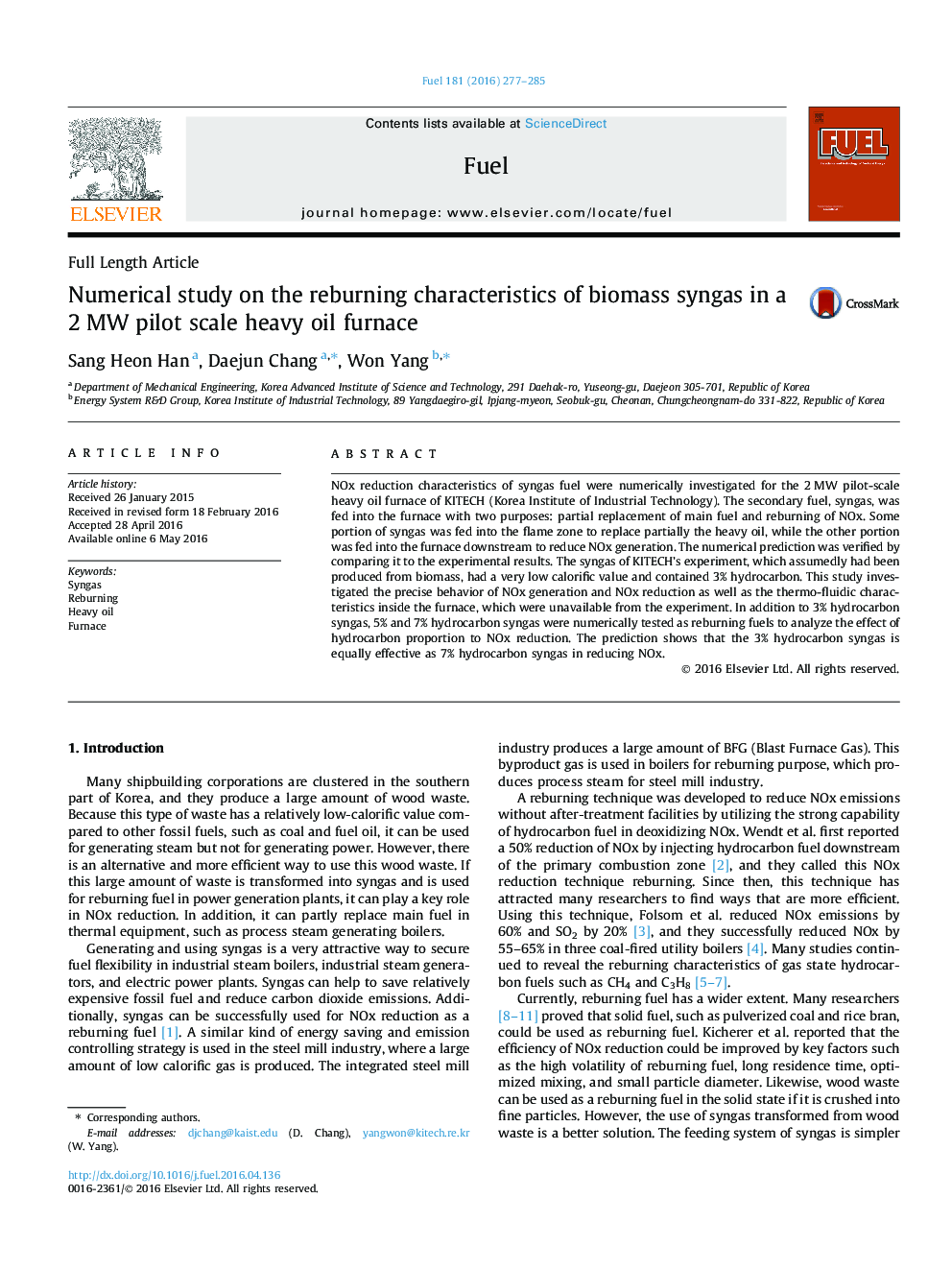| Article ID | Journal | Published Year | Pages | File Type |
|---|---|---|---|---|
| 204917 | Fuel | 2016 | 9 Pages |
NOx reduction characteristics of syngas fuel were numerically investigated for the 2 MW pilot-scale heavy oil furnace of KITECH (Korea Institute of Industrial Technology). The secondary fuel, syngas, was fed into the furnace with two purposes: partial replacement of main fuel and reburning of NOx. Some portion of syngas was fed into the flame zone to replace partially the heavy oil, while the other portion was fed into the furnace downstream to reduce NOx generation. The numerical prediction was verified by comparing it to the experimental results. The syngas of KITECH’s experiment, which assumedly had been produced from biomass, had a very low calorific value and contained 3% hydrocarbon. This study investigated the precise behavior of NOx generation and NOx reduction as well as the thermo-fluidic characteristics inside the furnace, which were unavailable from the experiment. In addition to 3% hydrocarbon syngas, 5% and 7% hydrocarbon syngas were numerically tested as reburning fuels to analyze the effect of hydrocarbon proportion to NOx reduction. The prediction shows that the 3% hydrocarbon syngas is equally effective as 7% hydrocarbon syngas in reducing NOx.
